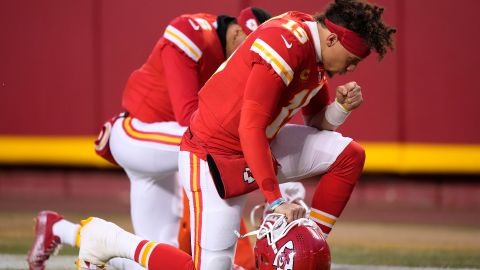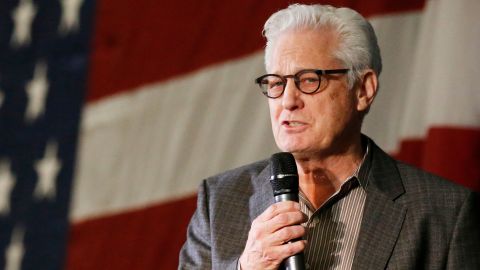Matthew Rozsa, Salon
February 09, 2023

Photo by NASA on Unsplash
No matter how much you might hate a movie, it is doubtful you loathe it as much as scientists despise this one infamous flick.
There is a motion picture so scientifically irresponsible that merely mentioning its title instantly arouses ire in countless otherwise stolid academic personalities. When first released in 2003, it badly bombed at the box office, prompting one physicist to speculate that the public stayed away because it could smell garbage. It "did not make money because people understood the science was so out to lunch," Emory University Professor Sidney Perkowitz proclaimed at the time. Indeed, Perkowitz was so bothered by the movie's misinformation that he crafted a set of guidelines to help Hollywood studios avoid future embarrassments. Hundreds of fellow scientists expressed support for Perkowitz's position; today this movie is best remembered for helping inspire the creation of the Science & Entertainment Exchange, which promotes the use of better science in movies, television and other media.
"I got a call from the director who was in Hollywood and was upset at me because I had said these things. That's the point at which I realized that he thought that it was scientifically accurate!"
The film in question, in case you have not yet figured it out, is "The Core," an entry in the venerable science fiction genre by director Jon Amiel and starring Aaron Eckhart, Hilary Swank, Delroy Lindo, Stanley Tucci, DJ Qualls, Richard Jenkins and Bruce Greenwood. The premise of "The Core" is both simple and ridiculous: The Earth's core has stopped rotating and a team of "terranauts" must journey to the center of the Earth with nuclear weapons to explode that pesky core into rotating again. Until the terranauts can succeed, though, all hell breaks loose on the surface, leading to the movie's most memorable scenes. Pacemakers instantly stop working, causing hundreds to drop dead in a single second; electronic devices start breaking down and zapping their owners; birds are unable to navigate and crash into people and buildings; apocalyptic lightning storms destroy iconic landmarks like Rome's Colosseum and San Francisco's Golden Gate Bridge; and, amidst the devastation, a lone hacker controls the Internet to cover up the truth from an otherwise-panicky public.
In theory this could be entertaining in a campy, so-dumb-it's-fun way; in reality, although the acting is top notch, the rest of "The Core" is too cliché and bloated to be enjoyable. Yet as Perkowitz observed 20 years ago, the bigger problem with "The Core" is that the information that it presents to audiences as legitimate science is, quite simply, bunk.
"The premise behind it is not quite right," Perkowitz told Salon. "The scientists involved describe the Earth as being surrounded by an 'electromagnetic field' which is disrupted when the core stops spinning. That's a misnomer. It is actually a 'magnetic field.' That's the main scientific error in this whole discussion. It's the magnetic field that gives us poles and all the rest of it."
Of course, as Perkowitz emphasized when speaking with Salon, it is not unreasonable for a sci-fi film to take some creative liberties with scientific fact. "The Core," however, plays so fast and loose with the truth that it becomes difficult to keep track of all of its mistakes. Among other things, the problem proposed would not suddenly cause any of the electronic malfunctions seen in the plot.
"I have a pacemaker myself and I would not drop dead if the Earth's magnetic field stopped working because the pacemaker is an electronic device," Perkowitz remarked. "Turning off the surrounding very weak magnetic field that comes from the Earth wouldn't have the slightest effect on it and shouldn't stop it." The technological errors don't stop there. At one point in the film a teenage hacker (Qualls) is able to control the entire Internet single-handedly to make sure no information is released about the planetary crisis.
"I have a pacemaker myself and I would not drop dead if the Earth's magnetic field stopped working."
"We've come to the point where we think that teenage hackers can do absolutely anything on the Internet," Perkowitz remarked. This is ludicrous, to be sure, but not necessarily more outlandish than the moment when Lindo's character explains that his ship can travel to the core with ultrasonic waves by using the same principles applied to breaking up kidney stones. "The sound waves can hit something solid and break it into pieces, but the amount of energy you would need to keep the lasers and the ultrasonics going through several thousand miles of solid rock is so immense that I just can't see how any kind of portable ship could carry it," Perkowitz noted.
The coup de grâce, however, is the terranauts' plan to restart the core by setting off nuclear weapons around its perimeter. "The last item about setting off nuclear weapons near the core to nudge the core to start rotating again is just a crazy idea," Perkowitz explained. "I don't know how you would focus nuclear explosions."
In short, "The Core" is more accurately categorized as fantasy than sci-fi — but apparently, this was news to the filmmakers. David J. Stevenson, a planetary scientist at the California Institute of Technology (Caltech), told Salon that he was asked to look at the script of "The Core" before it was released "but at a point where most of the movie had already been put together, so this was roughly six months before it was actually released to theaters." Although he was not an official scientific consultant, Stevenson was treated as someone who could react to the movie's merits and perhaps even comment positively on its science.
"The scientific content I thought was poor and I said that to other journalists and people," Stevenson recalled. "I even said that to Scientific American. Then I got a call from the director [Jon Amiel] who was in Hollywood and was upset at me because I had said these things. That's the point at which I realized that he thought that it was scientifically accurate!
Amiel may not have had that problem if he had had access to the resources provided by the Science & Entertainment Exchange. Launched by the National Academy of Sciences (NAS) in 2008, its director today is science writer Rick Loverd, who described how popular entertainment like movies can be "hugely impactful" in people's lives. To illustrate his point, Loverd pointed to the many scientists who say they were inspired by the 1966 TV show "Star Trek," Air Force personnel who enlisted after seeing the 1986 movie "Top Gun" and forensic science students who compelled universities to create new departments after they were motivated by the 2000 TV show "CSI: Crime Scene Investigation." Even something as simple as the Fonz getting a library card in the 1974 TV show "Happy Days" can have an effect; after that episode, legend has it that libraries were swarming with teenagers hoping to get library cards of their own (although these accounts have techically been unsubstantiated).
"There is a connection between what people see on screen and [their behavior], and the hardest thing to do is to influence people's behavior, much less their thinking and understanding."
"There is a connection between what people see on screen and [their behavior], and the hardest thing to do is to influence people's behavior, much less their thinking and understanding," Loverd told Salon. "But to change someone's behavior: that's the gold standard in communication. If you can go get somebody to get a library card, to get them to pursue a career . . . these are huge things." For instance, the Science & Entertainment Exchange has encouraged filmmakers to meet scientists who are women of color and from other under-represented groups, so that way they do not reinforce assumptions about science being the exclusive province of white men.
"I really do believe that people are going to be talking about films like 'Hidden Figures' soon and seeing measurable effects in enrollments in astrophysics classes as a result from women of color," Loverd predicted. "I'm way out on a limb here. There is nothing to support what I'm saying — except the past and history. I do think that it's a reasonable assumption on which our program operates that the characters of the past have influenced the STEM professionals of the present. When you look at that pattern and you look forward, it makes sense for an institution like the National Academy of Sciences to be reaching out to those storytellers to try to bring more characters like that to the screen to influence kids today."
In contrast to the positive impact of a film like 2016's "Hidden Figures" — which told the true story of three NASA scientists who faced discrimination for being Black American women — "The Core" is "one of those movies that is sort of widely cited by scientists, particularly if you're talking to scientists of a particular discipline like geophysicists, when they talk about how this is the worst example of what Hollywood does to science," explained Ann Merchant, Deputy Executive Director at the Office of Communications at NAS. "It's that kind of film."
"If you make that one assumption and then try to develop what the logical outcome would be, I think that makes a great story that is scientifically satisfying."
Merchant added that "The Core" was not directly responsible for the creation of the Science & Entertainment Exchange, but rather a prominent catalyst for convincing scientific professionals that such an organization needed to exist. In a sense, "The Core" epitomized the kind of factual sloppiness that many scientists find worrying.
"We were certainly aware of its role in the minds of many scientists as having done damage to science in what they felt was the public consumption of science in entertainment," Merchant told Salon. "It was from that point of view that we thought about movies like that. 'How does the public respond to science in a movie like 'The Core'"?
In the case of "The Core," many scientists expressed concern that it was the equivalent of taking a science class with a teacher who knows nothing about science. Yet scientists do not always agree on how "bad" the science has to be in a film before it goes against the public interest. Take director Roland Emmerich's 2004 disaster flick "The Day After Tomorrow," which warns humanity about the real-world threat of climate change with very shaky science.
"With a movie like 'The Day After Tomorrow' on climate change, many scientists saw that as being not the way to communicate 'accurately," Merchant explained, as the film's plot is riddled with errors. "On the other hand, if you have audience members that go into that movie and they say, 'Oh, climate change, is that a thing?' . . . the movie itself is not meant to be the primary mechanism for communicating accurate messaging around climate change. It's meant to stimulate somebody's thinking about the topic so that maybe they go learn more from more accurate sources."
By contrast, there are some popular sci-fi films that scientifically hold up, even with allowances made for poetic license.
"I do think that it's a reasonable assumption on which our program operates that the characters of the past have influenced the STEM professionals of the present."
"'2001: A Space Odyssey' is wonderful," Stevenson told Salon about the classic 1968 film about the human species' cosmic destiny. "It is a fantasy, of course, so I have no problem with '2001.' I talked to ["2001" author] Arthur C. Clarke once. A very talented person — obviously [director] Stanley Kubrick also falls in that category — can make something like '2001' achieve the goal of getting across the wonder" of the scientific subjects contained in its story. While "2001" is legendary for diligently attempting to be as scientifically accurate as its fantastical premise would allow, director James Cameron's 2009 movie "Avatar" passes Stevenson's smell test for a somewhat opposite reason.
"The way I see it is the following: If you are presenting something that is so obviously different from the environment in which we live, it's permissible to present things that seem to be difficult scientifically," Stevenson explained. In the case of "Avatar," "the whole idea is of a planet where there is a material called 'unobtanium.' That is almost a joke, meaning people who are watching it would I hope realize its status of that kind of fantasy, so I don't have a problem with that." By contrast, when "The Core" introduces its own substance called "unobtanium," it is presented not as a MacGuffin but as a potentially viable scientific material.
For his part, Perkowitz praised director Christopher Nolan's 2014 sci-fi film "Interstellar." While developing it, Nolan worked closely with Caltech theoretical physicist Kip Thorne to ground the story in as much reliable science as possible.
"He worked very hard to come up with things that made scientific sense, or at least could make scientific sense, and yet told a dramatic story," Perkowitz explained. "Yes, there has to be some creative license" — for instance, Perkowitz pointed out that most movies about outer space travel include ships that travel faster than the speed of light, which right now appears to be "completely out of the question" — but he argued that audiences can accept one big suspension of disbelief, as long as the rest of the story is told in good faith.
"If you make that one assumption and then try to develop what the logical outcome would be, I think that makes a great story that is scientifically satisfying," Perkowitz told Salon.
Perfecting that blend — "great story" and "scientifically satisfying" — has bedeviled sci-fi writers since Mary Shelley invented the genre with the 1818 novel "Frankenstein." It is likely that no sci-fi writer will ever find a combination that is absolutely flawless, but if "The Core" has any positive legacy, it is illustrating that this goal should always be sought. And for what it is worth, Perkowitz admitted that not all of the seemingly silly moments in "The Core" fail to hold up scientifically.
"It's believed that many birds know to navigate over thousands of miles because they have an organic sensor that tells which way the Earth's magnetic field is pointing, so if you turn off the magnetic field, it's possible that birds would lose their sense of navigation and maybe crash into windows. That one would be OK . . ." Perkowitz trailed off, and then the frustration returned to his voice. ". . . But again, they're ascribing it to an 'electromagnetic field,' and that's not what's going on! It is a magnetic field!"










:quality(70)/cloudfront-eu-central-1.images.arcpublishing.com/thenational/QH3BUX7CCZC5YIJUDE4KAUNCOU.jpg)